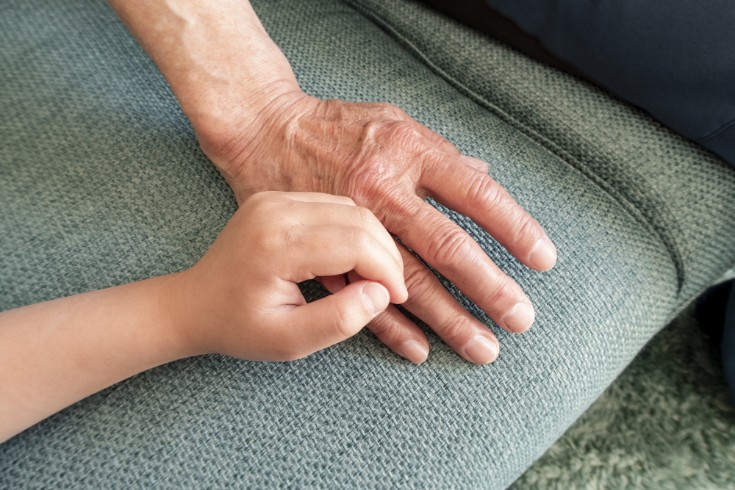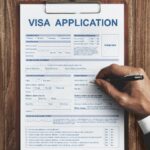Multiple Derivative Actions in Japanese Corporate Law and Key Case Law

The environment surrounding modern corporations is personalityized by complex corporate group structures, where a single ultimate parent company oversees numerous subsidiaries. While such structures can offer strategic advantages, they also present unique challenges for corporate governance, particularly regarding the responsibilities of subsidiary directors. Traditionally, shareholders of a company could initiate a derivative lawsuit to hold the directors of that specific company accountable. However, this system was not sufficiently equipped to address situations where misconduct by a subsidiary indirectly caused damage to the parent company and, by extension, its shareholders.
Recognizing this challenge, Japan introduced the Multiple Derivative Lawsuit system through the amendment of the Japanese Companies Act in 2014 (enforced in 2015). Formally referred to as the “Specific Responsibility Pursuit Lawsuit” under Japanese corporate law, this system enables shareholders of the ultimate parent company to hold directors of their wholly-owned or significant subsidiaries accountable. This legal framework plays an extremely important role in strengthening corporate governance within corporate groups. This article provides a comprehensive understanding of this critical legal framework, detailing its purpose, requirements, procedures, and related case law, and elucidates its role in enhancing corporate governance in Japanese corporate groups.
Overview of the Multiple Derivative Action System Under Japanese Corporate Law
Definition and Purpose of the System
The multiple derivative lawsuit system under Japanese Corporate Law allows shareholders of the ultimate parent company, namely the “final complete parent company,” to file lawsuits against the directors, corporate auditors, executive officers, accounting auditors, or liquidators (hereinafter referred to as “initiators, etc.”) of their wholly-owned subsidiaries (including grandchild companies) to pursue their responsibility. This system is defined as a “specific liability pursuit lawsuit” in Article 847-3, Paragraph 1 of the Japanese Corporate Law.
There are two main purposes of this system. Firstly, it aims to protect the shareholders of the parent company when misconduct or managerial negligence of a subsidiary causes damage to the parent company, consequently leading to financial losses for the shareholders of the parent company. The background for the establishment of this system includes the deregulation of holding companies following the amendment of Japan’s Antimonopoly Act in Heisei 9 (1997) and the creation of the stock exchange and stock transfer system after the revision of Japan’s Commercial Code in Heisei 11 (1999), which led to a rapid increase in pure holding companies. This situation significantly amplified the impact of the subsidiaries’ actions on the parent company, increasing the need for the parent company’s supervision of its subsidiaries and for checks from the shareholders of the parent company.
The second purpose is to provide a pathway for the shareholders of the parent company to pursue the responsibility of the directors, etc., of the subsidiary when there is a possibility that the parent company may neglect to file a lawsuit, known as the “possibility of litigation negligence.” Although the parent company has the authority to file a lawsuit as a shareholder of the subsidiary, there is a risk that it may avoid doing so due to personal relationships with the subsidiary’s officers or extensive interests within the group. This system ensures that responsibility is appropriately pursued by avoiding potential conflicts of interest at the parent company level. It is expected to serve not only as a damage recovery function but also as a deterrent to unlawful activities. This legal framework provides a restraining function from outside on decision-making within corporate groups and strengthens the overall framework of corporate governance.
Legal Basis: Article 847-3 of the Japanese Companies Act
The multiple derivative lawsuit system is explicitly provided for in Article 847-3 of the Japanese Companies Act. This article was newly established by the amendment to the Japanese Companies Act in Heisei 26 (2014) and came into effect on May 1st, Heisei 27 (2015) . Prior to the introduction of this system, there were no explicit provisions regarding multiple derivative lawsuits in the Japanese Companies Act, and they were not generally recognized in case law either .
This legislative reform was groundbreaking in filling the accountability void within corporate groups. It represents a legislative override of traditional judicial decisions, indicating that Japan’s corporate legal framework is evolving towards a more comprehensive and explicit governance structure for corporate groups. The introduction of this system signifies an active policy decision by the legislature to address the complexities of modern business realities, especially situations where risks and responsibilities flow through intricate group structures. As a result, the situation where shareholders of a parent company were not adequately protected in traditional shareholder derivative lawsuits has been improved, ensuring accountability across the entire corporate hierarchy.
Differences from Shareholder Derivative Actions
Multiple derivative actions, while sharing similar personalityistics with traditional shareholder derivative actions as stipulated in Article 847 of the Japanese Companies Act, have a significant difference in terms of who has the right to initiate the lawsuit. A typical shareholder derivative action is brought by a shareholder of the “company in question” against its directors and other executives. For example, a shareholder of Company A can file a shareholder derivative action against the directors of Company A.
In contrast, a multiple derivative action allows shareholders of the “ultimate parent company,” which has full control over its subsidiary, to pursue liability against the officers of the subsidiary, not the subsidiary itself. This means that the shareholders of the parent company can file a lawsuit against the officers of the subsidiary, enabling accountability in an indirect relationship. This is particularly relevant when the parent company, owning 100% of the subsidiary’s shares, does not initiate a lawsuit as a shareholder of the subsidiary, thus providing a means for the shareholders of the parent company to oversee the officers of the subsidiary.
This difference indicates a shift in the perception of corporate responsibility from a purely legal entity perspective to one that recognizes corporate groups as integrated economic units. It reflects the economic reality that the ultimate financial impact of a subsidiary’s misconduct affects the ultimate parent company and its shareholders. This legal system ensures that the shareholders of the parent company, who are the ultimate economic beneficiaries, have a means to protect their interests even when the parent company, as the direct legal entity and shareholder of the subsidiary, fails to take action. This reinforces the application of concepts similar to the “piercing of the corporate veil” in a limited and specific context for the purpose of accountability.
Requirements and Procedures for Derivative Actions in Japan
To initiate a derivative action in Japan, it is necessary to meet the stringent requirements set forth in Article 847-3 of the Japanese Companies Act. These requirements are designed to prevent the abuse of litigation while ensuring that the right to sue is granted only in cases where protection is genuinely needed.
Plaintiff Qualifications: Shareholders of the Ultimate Parent Company
The right to initiate a derivative lawsuit in Japan is reserved for shareholders of the “ultimate parent company.” An ultimate parent company refers to a corporation that is the complete parent company of another corporation and does not have a parent company of its own. In other words, it is the corporation at the very top of a corporate group.
Shareholders with the right to sue must have continuously held at least one-hundredth of the total voting rights or one-hundredth of the issued shares of the ultimate parent company for six months prior to the date of filing the lawsuit. However, this six-month continuous holding requirement does not apply to ultimate parent companies that are not publicly traded. This requirement ensures that the shareholder has a sustained interest in the matter subject to the lawsuit.
It is crucial that the plaintiff is a shareholder of the “ultimate parent company” and that the subsidiary in question is a “wholly-owned subsidiary.” This strict criterion suggests the legislator’s intent to limit the application of the system to a tightly controlled corporate pyramid, avoiding complex conflicts among minority shareholders at intermediate levels. If the subsidiary is not a wholly-owned subsidiary, there may be minority shareholders present who could directly initiate a shareholder derivative lawsuit. Therefore, Japanese Corporate Law is designed to avoid the complexities and potential for double recovery or conflicts of interest that could arise if shareholders at multiple levels (both parent and minority shareholders of the subsidiary) pursued similar lawsuits simultaneously. The stringent requirements for a “wholly-owned subsidiary” and “ultimate parent company” rationalize the application of derivative lawsuits, focusing on situations where the shareholders of the ultimate parent company are the sole indirect beneficiaries of the subsidiary’s performance, and the inaction of the parent company becomes the primary barrier to accountability.
Scope of Subsidiaries Targeted and Extent of Liability Pursuit Under Japanese Corporate Law
Subsidiaries subject to derivative lawsuits in Japan are limited to wholly-owned subsidiaries of a certain significance. Specifically, according to Article 847-3, Paragraph 4 of the Japanese Companies Act, this applies only when the book value of the shares of the subsidiary in question, as held by the ultimate parent company and its wholly-owned subsidiaries, exceeds one-fifth of the total assets of the ultimate parent company on the day the facts causing the liability of the promoters, etc., occurred (or a lower ratio if prescribed in the articles of incorporation). This criterion is set in accordance with the standards for simplified organizational reorganization under the Japanese Companies Act (Article 467, Paragraph 1, Item 2, etc.), focusing on significant subsidiaries that could potentially have a major impact on the management of the parent company.
The “one-fifth of total assets” criterion functions as a substantive filter to ensure that derivative lawsuits are reserved for significant subsidiaries that can truly affect the financial condition of the ultimate parent company and, consequently, its shareholder value. This criterion prevents shareholders from initiating costly and potentially confusing litigation over trivial issues in less significant subsidiaries. The legislators implicitly acknowledge that only substantial damages to major subsidiaries can translate into significant harm to the ultimate parent company. This requirement ensures that derivative lawsuits serve as a tool to address serious corporate governance failures within a corporate group, rather than a mechanism for managing every detail of business operations, thereby balancing the need for shareholder protection with the necessity of efficient corporate management.
The pursuit of liability is limited to the “specific responsibilities” of the promoters, etc., of the subsidiary. This is more narrowly defined than the parties subject to shareholder representative lawsuits under Article 847, Paragraph 1 of the Japanese Companies Act, deliberately excluding, for example, the pursuit of liability for return claims to beneficiaries of interest or the responsibility of payers in fictitious payments. This is because the legislators have determined that the possibility of litigation negligence is not an issue in these cases.
When a Lawsuit Cannot Be Filed Under Japanese Law
Under Japanese law, a derivative lawsuit cannot be initiated in the following cases. These provisions are crucial to prevent the abuse of the right to sue and to eliminate lawsuits that do not align with the purpose of the system.
- If the specific lawsuit for pursuing responsibility aims to secure an unjust benefit for the shareholder or a third party, or to harm the company or its ultimate parent company (Article 847-3, Paragraph 1, Item 1 of the Japanese Companies Act).
- If the ultimate parent company has not suffered any damage due to the facts that caused the specific responsibility (Article 847-3, Paragraph 1, Item 2 of the Japanese Companies Act).
The second “damage requirement” is particularly important. This requirement takes into account cases where, even if a subsidiary has suffered damage, it does not affect the stock value of the ultimate parent company, or when profits have been transferred to the parent company, and thus the parent company’s shareholders are deemed not to have a direct interest. This requirement clarifies that the primary goal of the multiple derivative lawsuit system is not merely to punish misconduct in subsidiaries but to enable the recovery of losses that directly affect the ultimate parent company and its shareholders. By doing so, it reinforces the economic rationale of the system, preventing lawsuits from being filed in situations where, despite a subsidiary incurring losses, the financial situation of the ultimate parent company is unaffected due to intra-group accounting or strategic decisions (for example, absorbing losses or transferring profits), or even when it benefits from such arrangements. This provision ensures that the multiple derivative lawsuit system is focused on allowing shareholders of the ultimate parent company to protect themselves from indirect losses arising from significant managerial negligence in their subsidiaries.
The Process Leading Up to Filing a Lawsuit
The procedures leading up to the initiation of a multiple derivative lawsuit in Japan are fundamentally structured in the same way as those for a shareholder derivative lawsuit. Initially, the ultimate parent company’s shareholders must request the subsidiary, which is to be held accountable for specific responsibilities, to file a lawsuit for pursuing those responsibilities. This request must be made in writing or through another method prescribed by the Ministry of Justice in Japan.
If the subsidiary does not file a lawsuit for pursuing the specific responsibilities within 60 days from the date of the request, the shareholder of the ultimate parent company may file the lawsuit on behalf of the subsidiary. However, if waiting for the 60-day period to elapse could result in irreparable harm to the subsidiary, the claimant has the right to immediately file the lawsuit, provided that the case does not fall under the category of ‘situations where filing is not permitted’.
This procedural requirement mandates that shareholders must first request the subsidiary to initiate a lawsuit before they can file one themselves. This underscores that the multiple derivative lawsuit is a secondary corrective mechanism, activated only when the primary corporate entity (the subsidiary) or its direct shareholders (the parent company) fail to act. This design signifies that the multiple derivative lawsuit is not intended to completely bypass the subsidiary’s own corporate governance mechanisms; rather, it serves as a check when those internal mechanisms fail to function or are deliberately ignored. The procedural design reinforces the principle of corporate autonomy while providing the necessary external triggers for accountability, ensuring that the system is used as a last resort to correct failures in internal governance.
The Background and Significance of the Multiple Derivative Action System in Japan
Historical Development of the System
Before the explicit introduction of the multiple derivative action system into Japanese corporate law, Japanese courts generally did not recognize such actions. However, the Supreme Court’s decision in the Mitsui Mining case in Heisei 5 (1993) sparked discussions on the necessity of multiple derivative actions. Although the ruling did not directly allow for multiple derivative actions, it stimulated vigorous debate among academics and practitioners regarding the pursuit of responsibility within corporate groups.
The historical evolution of case law theory in the United States also influenced the design of Japan’s system. In the US, multiple derivative actions have been recognized for some time, with decisions such as the Holmes v. Camp case by the New York Intermediate Appellate Court in 1917 serving as examples. Against this backdrop of international trends, Japan’s legal system steered towards the introduction of multiple derivative actions as a means to achieve more effective corporate governance in response to the increasing complexity of corporate groups. These discussions bore fruit with the amendment of Japan’s Companies Act in 2014 (enforced in 2015), which clearly positioned the multiple derivative action system within the Japanese legal framework. This was a significant step in the maturation of Japanese corporate law and its adaptation to the modern business environment.
The Role in Corporate Governance and Expected Effects
The multiple derivative action system plays an extremely important role in strengthening corporate governance within corporate groups. It is designed to address the structural issue of “litigation reluctance,” where a parent company may neglect to pursue responsibility for misconduct in a subsidiary. By providing a pathway for shareholders of the parent company to take direct action, the system promotes transparency and accountability across the entire group.
With the introduction of this system, officers of subsidiaries are subject to direct oversight not only from the parent company but also from the ultimate shareholders of the parent company. This is expected to enhance the deterrent effect against illegal activities and improve the overall compliance and ethical standards within the corporate group. Additionally, should actual damage occur, the system also functions to facilitate recovery. This system demonstrates that Japanese corporate governance is evolving to pursue effectiveness not just within a single corporate entity but across the entire corporate group, aligning with international best practices in corporate governance.
Key Case Law on the Multiple Derivative Action System Under Japanese Corporate Law
Debates and Trends in Case Law Prior to the Introduction of the System
Before the multiple derivative action system was explicitly introduced into Japanese corporate law, Japanese courts were generally reluctant to recognize such lawsuits. For instance, there was a tendency to deny the initiation of multiple derivative actions in several lower court decisions, such as the Tokyo District Court decision on March 29, 2001. These rulings reflected the legal interpretation in Japan at the time, which limited the plaintiff qualification in shareholder representative lawsuits strictly to the shareholders of the company being held accountable.
However, the Supreme Court decision in 1993, known as the Mitsui Mining case, did not directly approve multiple derivative actions but served as a catalyst for vigorous debate in academic and practical circles about the necessity of protecting shareholders of parent companies within corporate groups. This case highlighted the challenges of pursuing accountability in corporate groups that the existing legal system could not adequately address, becoming one of the significant issues leading to subsequent amendments to Japanese corporate law. The historical context demonstrates that the 2015 amendment to Japanese corporate law was not merely a legislative change but a pivotal moment in Japan’s corporate legal system to address the realities of increasingly complex corporate groups.
Operational Status and Current State of Case Law After the Introduction of the System
Since the introduction of the multiple derivative action system in 2015, there have not been many reported cases directly based on Article 847-3 of the Japanese Companies Act. Several factors may contribute to the scarcity of such cases.
Firstly, the requirements for initiating a multiple derivative lawsuit are stringent, limiting the cases that can actually be brought to court. For example, the subsidiary in question must be a wholly-owned subsidiary, the book value of its shares must exceed one-fifth of the total assets of the ultimate parent company, and the ultimate parent company itself must have suffered damage. These requirements may function as a filter to suppress frivolous and abusive litigation.
Secondly, the mere existence of this system may act as a powerful deterrent for officers within corporate groups. The risk of being held accountable through a multiple derivative lawsuit may encourage more cautious management decisions and strengthen corporate governance.
Thirdly, there is a structural issue where it is unlikely that the ultimate parent company, which controls the management of its intermediate wholly-owned subsidiaries, will initiate a lawsuit to pursue the responsibility of its own officers. The multiple derivative action system was created precisely to address this “prosecution reluctance” by parent companies. Therefore, the lack of lawsuits does not necessarily mean the system is not functioning; it could suggest that its deterrent effect is working or that internal resolutions are being reached before litigation.
While direct cases of multiple derivative actions are rare, general shareholder representative lawsuit precedents concerning officers’ responsibilities, such as breaches of the duty of due care, can be informative in understanding the courts’ judgment criteria should multiple derivative actions be initiated. For example, in the Tokyo District Court decision on September 25, 2014, the court recognized a breach of the duty of due care by directors involved in a listed company’s illegal political donations in violation of the Political Funds Control Law and affirmed claims against some of the directors. In another case, the Tokyo District Court decision on March 27, 2014, found listed company directors liable for damages for executing a bond subscription that constituted a “transfer and receipt of significant property” as defined in Article 362, Paragraph 4, Item 1 of the Japanese Companies Act without a board of directors’ resolution, thereby causing damage to the company. These cases indicate the scope of directors’ responsibilities and the standards for due care, which are likely to be applied similarly in multiple derivative actions.
Conclusion
The multiple derivative lawsuit system under Japanese Corporate Law is an extremely important legal mechanism introduced to address the challenges of corporate governance inherent in today’s complex corporate group structures. This system allows shareholders of the ultimate parent company to pursue the responsibilities of officers in their wholly-owned subsidiaries or significant subsidiaries, overcoming the structural issue of ‘litigation reluctance’ by the parent company and enhancing transparency and accountability across the corporate group. Its stringent requirements reflect a balanced design philosophy that prevents abuse of the system while granting the right to sue only in cases where protection is truly necessary.
Our law firm boasts a wealth of experience in the field of the multiple derivative lawsuit system and related corporate governance under Japanese Corporate Law, serving numerous clients within Japan. We possess deep knowledge and practical experience in pursuing accountability within complex corporate group structures, legal obligations of officers, and the exercise of shareholder rights. Additionally, our firm includes several attorneys who are native English speakers with foreign legal qualifications, enabling us to provide high-quality legal services and smooth communication in both Japanese and English from an international perspective. If you require consultation on the multiple derivative lawsuit system or legal support in general corporate governance, please do not hesitate to contact our firm.
Category: General Corporate





















